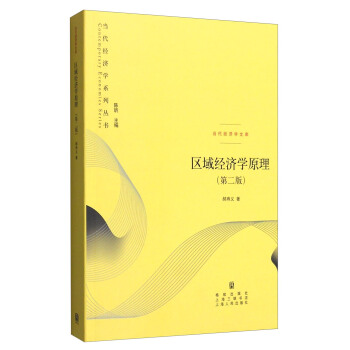![极化建模与雷达遥感应用(英文版.中文评注) [Polarisation: Applications in Remote Sensing ]](https://pic.windowsfront.com/11760183/55e3ffb0N6c770a50.jpg)

具体描述
编辑推荐
首次将波极化与雷达干涉的主题结合在一起,重点论述两者融合后的极化干涉技术的重要发展内容简介
作者从电磁波的物理特性入手,深入浅出地阐述了极化和极化干涉技术基本概念中所蕴涵的物理意义以及贯穿其中的核心思想,使读者易于理解极化和极化干涉技术的本质和基本特性。本书首次将波极化与雷达干涉的主题结合在一起,重点论述两者融合后的极化干涉技术的重要发展。本书共9章,分别是极化电磁波、去极化与散射熵、表面散射与体散射去极化、分解理论、雷达干涉技术概述、极化干涉理论、表面散射与体散射相干性、运用极化干涉进行参数估计,以及极化干涉技术应用。目录
1Polarised electromagnetic waves极化电磁波
1.1The generation of polarised waves
极化波的产生
1.1.1Maxwell’s equations and vector plane waves
麦克斯韦方程组与矢量平面波
1.1.2Polarised wave coordinate systems
极化波坐标系
1.2The propagation of polarised waves
极化波的传播
1.2.1Case I: wave propagation in isotropic media and C2 symmetry
各向同性介质中波的传播和C2对称性
1.2.2Case II: wave propagation in anisotropic media
各向异性介质中波的传播
1.2.3Case III: Propagation in chiral media
手(征)性介质中波的传播
1.2.4The Jones calculus: homogeneous and inhomogeneous propagation channels
Jones计算法:均匀与非均匀传输通道
1.2.5The polar decomposition
矩阵的极分解
1.2.6Propagation in stochastic channels
随机通道中的传输
1.2.7The Foldy?Lax equations
Foldy?Lax方程
1.3The geometry of polarised waves
极化波几何
1.3.1The polarisation ellipse
极化椭圆
1.3.2Polarisation geometry for paraxial waves
近轴波的极化几何
1.3.3The Poincaré sphere
Poincaré球
1.3.4The Stokes vector
Stokes矢量
1.4The scattering of polarised waves
极化波的散射
1.4.1The scattering amplitude matrix [S]
散射幅度矩阵[S]
1.4.2Back and forward scattering alignment (BSA and FSA) systems
后向与前向散射坐标系
1.4.3Singular value analysis of the scattering matrix
散射矩阵的奇异值分析
1.4.4Combined wave propagation and scattering effects
综合考虑传播效应和散射效应
1.5Geometry of the scattering matrix
散射矩阵几何
1.5.1Polarisation signatures
极化特征
1.5.2The polarisation fork
极化叉
1.5.3Lorentz geometry and the scattering matrix
Lorentz几何与散射矩阵
1.6The scattering vector formulation
散射矢量表达式
1.6.1Scattering mechanisms
散射机理
2Depolarisation and scattering entropy
去极化与散射熵
2.1The wave coherency matrix
波相干矩阵
2.1.1The wave dichotomy
波的二分法
2.2The Mueller matrix
Mueller矩阵
2.2.1Properties of the Mueller matrix
Mueller矩阵的性质
2.2.2The backscatter Mueller and Stokes reflection matrix
后向散射Mueller矩阵与Stokes反射矩阵
2.2.3The Stokes criterion
Stokes准则
2.3The scattering coherency matrix formulation
散射相干矩阵表达式
2.3.1Eigenvalue decomposition of the coherency and covariance matrices
相干矩阵和协方差矩阵的特征值分解
2.4General theory of scattering entropy
散射熵的一般理论
2.4.1Depolarisation for N=2 scattering systems
N=2散射系统的去极化
2.4.2Depolarisation for N = 3 scattering systems
N=3散射系统的去极化
2.4.3Depolarisation in N = 4 scattering systems
N=4散射系统的去极化
2.5Characterization of depolarising systems
去极化系统的表征
2.6Relating the Stokes/Mueller and coherency matrix formulations
Stokes/Mueller矩阵与相干矩阵的关系式
3Depolarisation in surface and volume scattering
表面散射与体散射去极化
3.1Introduction to surface scattering
表面散射介绍
3.1.1The Fresnel equations
Fresnel方程组
3.1.2Polarisation properties of surface backscatter
表面后向散射极化特性
3.1.3The Bragg surface scattering model
布拉格表面散射模型
3.1.4Coherent surface scattering component
相干表面散射分量
3.1.5The effect of surface slope on the scattering matrix
散射矩阵中的表面坡度效应
3.2Surface depolarisation
表面散射去极化
3.2.1The extended or X-Bragg model
扩展Bragg模型
3.2.2Polarisation effects in bistatic surface scattering
双站表面散射中的极化效应
3.3Introduction to volume scattering
体散射介绍
3.3.1Small particle scattering
微小质点散射
3.3.2Scattering by large particles
大质点散射
3.4Depolarisation in volume scattering
体散射去极化
3.4.1Volume scattering with reflection symmetry
满足反射对称性的体散射
3.4.2Bistatic volume scattering
双站体散射
3.4.3Depolarisation in multiple scattering
多次散射去极化
3.5Simple physical models for volume scattering and propagation
体散射及传播过程的简单物理模型
3.5.1The water cloud model (WCM)
水云模型(WCM)
3.5.2Ulaby model: two-phase volume propagation models
乌拉比模型:两阶段体传播模型
3.5.3Forest extinction models
森林衰减模型
3.5.4Dual polarised surface and volume depolarisation
双极化表面与体散射去极化
4Decomposition theorems
分解理论
4.1Coherent decomposition theorems
相干分解理论
4.1.1Roll invariance and eigenvectors
旋转不变性与特征矢量
4.1.2Krogager and Cameron decompositions
Krogager与Cameron分解
4.1.3The scattering alpha parameter
散射角参数
4.1.4Orthogonal scattering mechanisms
正交散射机制
4.1.5Orthogonality of scattering mechanisms in natural terrain
自然地表散射机制的正交性
4.2Incoherent decomposition theorems
非相干分解理论
4.2.1The Huynen decomposition: rank 1 scattering + noise decompositions
Huynen分解:秩为1的散射+噪声分解
4.2.2The Cloude?Pottier decomposition
Cloude-Pottier分解
4.2.3Model-based incoherent decompositions
基于模型的非相干分解
4.2.4The Freeman?Durden decomposition
Freeman-Durden分解
4.2.5Generalized Freeman?Durden decompositions
广义Freeman-Durden分解
4.2.6Propagation distortions in model-based decompositions
基于模型的分解中的传输失真
5Introduction to radar interferometry
雷达干涉技术概述
5.1Radar interferometry
雷达干涉
5.1.1Across-track interferometry
交轨干涉
5.1.2Introduction to differential interferometry
差分干涉
5.1.3Along track interferometry (ATI)
顺轨干涉
5.2Sources of interferometric decorrelation
干涉去相干源
5.2.1Signal-to-noise decorrelation
信噪比去相干
5.2.2Temporal decorrelation
时间去相干
5.2.3Baseline decorrelation
基线去相干
5.2.4Volume decorrelation: the Fourier?Legendre series
体散射去相干:Fourier-Legendre级数
5.2.5Summary: coherence decomposition
总结:相干性分解
6Polarimetric interferometry
极化干涉理论
6.1Vector formulation of radar interferometry
雷达干涉矢量方程
6.1.1Generalized coherency matrix formulation
广义相干矩阵方程
6.2Coherence optimization
相干最优
6.2.1Unconstrained optimization
约束相干最优
6.2.2Constrained optimization
有约束相干最优
6.2.3Maximum coherence separation and the coherence region
最大相干性分离及相干区域
6.2.4Subspace coherence region analysis: the SVD and Schur decompositions
子空间相干区域分析:奇异值分解和Schur 分解
6.2.5Numerical bias in coherence optimization
相干最优中的数值偏差
7The coherence of surface and volume scattering
表面散射与体散射相干性
7.1Coherence loci for surface scattering
表面散射的相干性轨迹
7.2Coherence loci for random volume scattering
随机体散射的相干性轨迹
7.2.1Special case I: the exponential profile
特殊情况1:指数剖面曲线
7.2.2Special case II: oriented volume scattering
特殊情况2:有指向体散射
7.2.3Optimum coherence values for oriented volume scattering
有指向体散射的相干最优
7.3The coherence loci for a two-layer scattering model
两层媒质散射模型的相干性轨迹
7.4Important special cases: RVOG, IWCM and OVOG
重点个例:RVOG, IWCM和OVOG
7.4.1The random-volume-over-ground (RVOG) model
地表和地表上的随机体散射(RVOG)模型
7.4.2Polarisation coherence loci for RVOG
RVOG模型的极化相干性轨迹
7.4.3Structural ambiguity in RVOG
RVOG模型中的结构模糊
7.4.4The coherence loci for IWCM
IWCM模型的相干性轨迹
7.4.5The coherence loci for OVOG
OVOG模型的相干性轨迹
7.4.6The oriented-volume-under-ground (OVUG) model
地表和地表下的有指向体散射(OVUG)模型
8Parameter estimation using polarimetric interferometry
运用极化干涉进行参数估计
8.1Surface topography estimation
表面地形估计
8.1.1Phase bias removal
相位偏差的去除
8.1.2Coherence separation optimization
相干性分离最优化算法
8.1.3Total least squares (TLS) surface topography estimation
总体最小二乘法估计表面地形
8.1.4OVOG: surface topography with differential extinction
OVOG模型:具有不同方向消光系数的表面地形估计
8.2Estimation of height hv
高度估计
8.2.1First-order inverse coherence model
一阶相干性反演模型
8.2.2Second-order Legendre model
二阶Legendre模型
8.2.3Approximate height estimation from the second-order Legendre series
运用二阶Legendre级数估计高度
8.2.4Height estimation using RVOG
运用RVOG模型估计高度
8.2.5Depth estimation using OVOG
运用OVOG模型估计穿透深度
8.2.6OVOG model height estimation
OVOG模型高度估计
8.3Hidden surface/target imaging
隐藏地表/物体成像
8.3.1RVOG estimation of μ
地体幅度比的RVOG模型估计
8.3.2Optimum baseline for hidden surface detection
隐藏地表探测的最优基线
8.4Structure estimation: extinction and Legendre parameters
结构估计:消光系数和Legendre 系数
8.4.1Coherence tomography (CT)
相干层析
8.4.2Bootstrap polarisation coherence tomography (PCT)
Bootstrap 极化相干层析
8.4.3Condition number and error analysis
条件数及误差分析
8.4.4SNR and temporal decorrelation in CT
相干层析中的信噪比去相干及时间去相干
8.4.5Multiple baseline CT
多基线相干层析
9Applications of polarimetry and interferometry
极化干涉技术应用
9.1Radar imaging
雷达成像
9.1.1PRF, antenna size and Doppler bandwidth
PRF,天线尺寸与多普勒带宽
9.2Imaging interferometry: InSAR
干涉成像:InSAR
9.3Polarimetric synthetic aperture radar (POLSAR)
极化合成孔径雷达
9.3.1Pulse switching requirements for POLSAR imaging
POLSAR成像的脉冲切换条件
9.3.2Polarimetric calibration
极化定标
9.3.3Scattering vector formulation of polarimetric calibration
极化定标的散射矢量表达
9.3.4Compact polarimetry
简缩极化
9.4Polarimetric SAR interferometry (POLInSAR)
极化干涉SAR(POLInSAR)
9.4.1Calibration of POLINSAR systems
极化干涉SAR系统定标
9.4.2Compact POLInSAR
简缩极化干涉SAR
9.5Applications of polarimetry and interferometry
极化干涉技术应用
9.5.1Application 1: depolarisation by surface scattering
应用1:表面散射去极化
9.5.2Application 2: depolarisation by volume scattering
应用2:体散射去极化
9.5.3Application 3: coherent scattering from vegetation
应用3:植被的相干散射
9.5.4Application 4: tomographic imaging of vegetated surfaces
应用4:植被覆盖地表的层析成像
9.5.5Application 5: forest height estimation using POLInSAR
应用5:极化干涉SAR森林高度估计
9.5.6Application 6: spaceborne satellite radar polarimetry
应用6:星载极化雷达
Appendix 1Introduction to matrix algebra
附录1矩阵代数简介
Appendix 2Unitary and rotation groups
附录2酉群与旋转群
Appendix 3Coherent stochastic signal analysis
附录3相干随机信号分析
Bibliography
参考文献
Index
中英文对照索引
前言/序言
用户评价
我一直对地球科学和遥感技术抱有浓厚的兴趣,而这本书无疑为我打开了一个全新的视角。我原本以为它会是一本晦涩难懂的技术专著,充斥着复杂的数学模型和晦涩的专业术语,但实际阅读体验却远超我的预期。这本书的独特之处在于,它并没有将重心放在“如何构建”极化模型上,而是着重展现了这些模型在“遥感应用”中的强大力量。它就像一位经验丰富的向导,带领我穿越一片片应用场景,从森林覆盖率的动态变化,到冰川融化的监测,再到海洋环境的评估。书中的每一个案例都经过精心挑选,并且用清晰易懂的语言进行阐述,即使是其中的技术细节,也都能在相对完整的语境下被理解。我尤其欣赏作者在描述那些复杂的极化特征时,所使用的比喻和类比,它们极大地帮助了我去理解那些肉眼无法看到的电磁波特性如何转化为有意义的地物信息。这本书让我对极化雷达遥感技术有了更深刻的认识,它不仅仅是获取地表图像的工具,更是洞察地球系统运行规律的“眼睛”。它激发了我对环境监测和可持续发展领域进一步研究的兴趣,让我看到科学技术在解决全球性挑战中的巨大潜力。
评分作为一个在地理信息科学领域学习的学生,我一直在寻找能够拓宽我视野的文献,而这本书恰好满足了我的需求。我原以为它会是一本专注于理论推导和数学建模的学术著作,但让我惊喜的是,它将目光更多地投向了“应用”。这本书巧妙地避开了深奥的公式海洋,而是用一系列引人入胜的案例研究,展示了极化建模如何在雷达遥感领域发挥出巨大的价值。无论是对农作物种类的识别,还是对土壤湿度和地表粗糙度的估算,亦或是对水体污染的监测,书中都给出了详实而富有说服力的论证。我特别喜欢书中关于城市热岛效应和基础设施监测的章节,它让我看到了极化雷达技术在智慧城市建设和灾害风险评估方面的巨大潜力。作者在解释复杂概念时,常常会引用大量的真实遥感数据和图像,这些直观的展示方式,极大地增强了我的理解能力。这本书让我深刻体会到,理论研究的最终目的,是为了更好地服务于人类社会的发展和对地球环境的保护。它不仅提升了我对雷达遥感技术的专业认知,更激发了我对解决现实世界问题的科学热情。
评分这是一本让我感到惊喜的读物,尤其是在看到它并非直接讲解“极化建模”和“雷达遥感”这些硬核技术本身时。我原本预期的是一本纯粹的技术手册,充满了公式、算法和复杂的图表,但实际翻阅后,我发现它的价值远不止于此。它更像是一扇窗户,让我得以窥见那些抽象技术如何在现实世界中绽放出璀璨的应用之光。书中详尽地描述了极化信息如何被赋予“意义”,如何超越了简单的回波强度,转变为能够揭示地表细微特征、水体状态甚至植被健康状况的强大工具。我特别喜欢其中关于农业监测的案例,通过极化雷达数据,研究人员能够区分不同的作物类型,评估其生长周期,甚至提前预警病虫害的发生。这种将前沿科学与实际需求紧密结合的叙述方式,让我深刻体会到科学研究的终极意义——服务于人类社会的发展。书中的图文并茂,那些精美的遥感图像配合深入浅出的文字解释,让我这个非专业人士也能感受到极化雷达的独特魅力。尽管我对其中的具体建模过程了解不多,但通过这些生动的应用场景,我仿佛亲眼见证了科技进步如何一步步改变我们认识和管理地球的方式。它激发了我对这一领域的进一步探索兴趣,让我开始思考,在其他领域,是否也能借鉴这种“以应用为导向”的解读方式,去理解那些看似高深的技术。
评分初次接触这本书,我怀着一种既期待又有些忐忑的心情,毕竟“极化建模”和“雷达遥感”听起来就充满了专业性和技术壁垒。然而,这本书的魅力恰恰在于它对这些复杂概念的“软性”解读,它并没有将我们置于一个充满枯燥公式的数学迷宫中,而是通过大量引人入胜的应用案例,巧妙地将抽象的理论知识具象化。书中关于城市规划和灾害监测的章节尤其让我印象深刻。我惊叹于极化雷达如何能够穿透云层,捕捉到城市扩张的动态,识别不同建筑材料的特性,甚至在灾难发生后,为救援工作提供关键的地理信息。作者并没有回避技术细节,但他们将其放置在一个更广阔的应用背景下进行阐释,使得即使是像我这样对雷达技术不太熟悉的读者,也能理解这些技术是如何被用来解决现实世界中的实际问题的。它让我意识到,科学不仅仅是实验室里的理论推演,更是解决社会挑战的有力武器。书中的英文原文配合中文评注,也为我提供了一个很好的学习平台,在理解英文技术术语的同时,也能通过中文的解释加深理解。这种设计既保留了原著的严谨性,又降低了阅读门槛,让我能够更轻松地沉浸在书中的世界里。
评分这本书给我带来的最大启发,并非在于它具体教授了多少建模的技巧,而是它所展现出的,那些关于“如何理解和应用”极化信息的力量。我原本以为会是一本纯粹的技术手册,但它的内容更侧重于“应用”的宏观视角。书中并没有深挖复杂的极化模型推导过程,而是通过一系列令人印象深刻的案例,展示了极化雷达数据在不同领域的强大应用前景。我尤其喜欢关于地质勘探和矿产资源探测的章节,它让我惊叹于极化信息如何能够穿透地表,揭示地下隐藏的秘密。作者在阐述时,善于将抽象的极化参数与具体的地物特征相联系,使得即使是初学者,也能从中领略到极化雷达的独特性和优势。书中的中文评注,为理解那些略显生涩的英文技术术语提供了极大的便利,使得阅读过程更加流畅。这本书让我意识到,技术本身固然重要,但如何将技术转化为解决实际问题的有效工具,并从中发掘出更深层次的科学内涵,才是更具价值的探索。它拓宽了我对雷达遥感技术的认知边界,让我看到了其在多个领域,包括我所关注的地球物理探测方面,所蕴含的巨大潜力和广阔前景。
评分中文较少
评分中文较少
评分是一本好书!
评分中文较少
评分中文较少
评分是一本好书!
评分是一本好书!
评分参考书必备
评分刚到,还未看
相关图书
本站所有内容均为互联网搜索引擎提供的公开搜索信息,本站不存储任何数据与内容,任何内容与数据均与本站无关,如有需要请联系相关搜索引擎包括但不限于百度,google,bing,sogou 等,本站所有链接都为正版商品购买链接。
© 2025 windowsfront.com All Rights Reserved. 静流书站 版权所有

![国务院发展研究中心研究丛书2015:绿色发展 体制机制与政策 [Green Development:Institutional Mechanism and Policies] pdf epub mobi 电子书 下载](https://pic.windowsfront.com/11771921/560b307cN9b26779d.jpg)



![新中国工业经济史(第三版) [The History of Industrial of China] pdf epub mobi 电子书 下载](https://pic.windowsfront.com/12150558/58db8a87Na67b5a7b.jpg)














